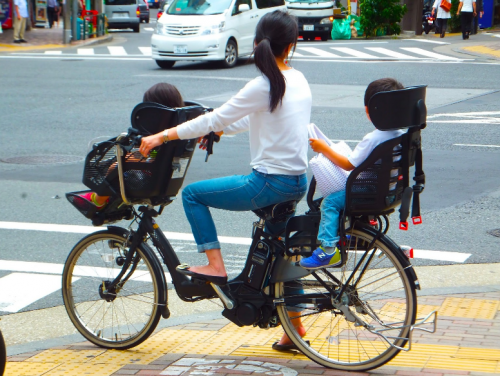
The Tokyo megalapolitan area is home to thirty eight million people – substantially in excess of half the UK population and the world’s largest urban agglomeration. Having experienced it firsthand, here are some observations from a wide-eyed Londoner:
- I witnessed no significant traffic jams, and the humid air felt much less polluted than London’s. Even delivery vans felt scarce; perhaps they do their job at night. There is no road rage. Or litter.
- Trains and subways dominate transport modal share, with breathtaking efficiency. Trains have up to 15 carriages, approach and leave platforms at high speed where passengers wait in orderly queues to transfer efficiently. Frequency is inexorable, punctuality a given.
- Walking and cycling dominate local journeys, mainly sharing the pavements. And women cyclists are a lot more common than male, usually riding low-slung long wheelbase models with at least one child and a lot of shopping on board.
- Such cars that do intrude into the scene are not the Nissans and Hondas we are familiar with, but small Postman Pat style cuboid biscuit tins, a wheel at each corner. These fit into cuboid spaces beside or beneath the modest sized family homes.
- Such density of cohabitation is only made tolerable by the famous Japanese courtesy and good manners. I only experienced a famous full on rush-hour crush once, when I found two small ladies nestling under my left armpit, and got the giggles. Maybe a tenth of commuters wear face masks, not because they have a communicable disease, but just as a precaution in the face of such proximity.
I could go on, or give statistical proofs, but this picture will suffice to summarise. It needs explanation as it does not show clearly what I had witnessed on an earlier commute.
 This is the rear view from the fast Tokaido train to Yokohama. The left hand lines carry the stopping Keihin service that runs every five minutes in both directions; in other words there is a near-continuous flow of trains on all four tracks. You can just make out the first of half a dozen level crossings on this stretch, already open 3 seconds after our passage, with a few walkers, cyclists and a car about to cross. You will have to take my word for it that the next Keihin train is on its way in the distance, with probably an up service or two approaching from behind our POV.
This is the rear view from the fast Tokaido train to Yokohama. The left hand lines carry the stopping Keihin service that runs every five minutes in both directions; in other words there is a near-continuous flow of trains on all four tracks. You can just make out the first of half a dozen level crossings on this stretch, already open 3 seconds after our passage, with a few walkers, cyclists and a car about to cross. You will have to take my word for it that the next Keihin train is on its way in the distance, with probably an up service or two approaching from behind our POV.
As I witnessed it, each level crossing opens and closes for just 10-20 seconds to let a few road users cross, an approaching train clearly in sight. What an astonishing confidence in electronic signalling, and the obedient good sense of the public not to do anything foolhardy! That’s how 38 million people get about.
Oliver Gibbs says:
The level crossing thing is amazing!
Tokyo was a fantastic example of co-operation and efficiency.
Ollie
Gabriel Gottlieb says:
Really interesting observations, Martin. I was there to witness it, too, and it is indeed a miracle of efficiency. Cycle lanes have a long way to go, though. I didn’t observe that that many people cycle apart from very short distances on the pavement (which is annoying for pedestrians, and apparently against the law).
Martin Nelson says:
Thanks Gabriel. I doubt if any Tokyan (?) would do anything illegal! I saw plenty of segregated pavement arrangements, but their cycling is a slow and courteous (obvs). Only children wear helmets – which is an indication that cyclists are recognised as vulnerable road users, better off on the pavement.. I also saw big bike parks at stations in the outer suburbs. It’s worth further research.